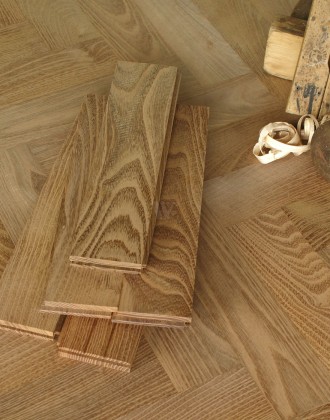Black Locust
Black locust (Robinia pseudoacacia) is a hardwood species that is native to North America but has been introduced to other parts of the world. It is known for its durability, strength, and resistance to rot and decay, and is widely used in outdoor applications such as decking, fencing, and landscaping. Here are some characteristics of black locust wood:
Color: The heartwood of black locust is golden to reddish brown in color, often with darker streaks. The sapwood is usually lighter in color and may be yellow or greenish.
Grain: Black locust has a straight and often interlocked grain, with a fine to medium texture. The wood is relatively uniform in appearance and does not have a strong figure or pattern.
Density: Black locust is a dense hardwood, with an average density of about 49 pounds per cubic foot (785 kg/m3). This density makes it strong and durable, with good resistance to wear and tear.
Durability: Black locust is highly durable and resistant to decay, rot, and insect attack. It is also resistant to moisture and does not shrink or swell much with changes in humidity.
Workability: Black locust is moderately difficult to work with, due to its high density and hardness. It can be difficult to saw, plane, and machine, and may dull cutting tools quickly. However, it sands and finishes well, and takes stains and finishes evenly.
Uses: Black locust is primarily used in outdoor applications, such as decking, fencing, and landscaping. Its durability and resistance to decay make it ideal for these applications, and it is also used for boatbuilding, furniture, and other specialty applications.
Overall, black locust is a highly durable and attractive hardwood species that offers strength and resistance to decay. Its density and hardness can make it challenging to work with, but its unique characteristics make it a popular choice for outdoor applications and specialty projects.

Black locust (Robinia pseudoacacia) is a hardwood species that is native to North America but has been introduced to other parts of the world. It is known for its durability, strength, and resistance to rot and decay, and is widely used in outdoor applications such as decking, fencing, and landscaping. Here are some characteristics of black locust wood:
Color: The heartwood of black locust is golden to reddish brown in color, often with darker streaks. The sapwood is usually lighter in color and may be yellow or greenish.
Grain: Black locust has a straight and often interlocked grain, with a fine to medium texture. The wood is relatively uniform in appearance and does not have a strong figure or pattern.
Density: Black locust is a dense hardwood, with an average density of about 49 pounds per cubic foot (785 kg/m3). This density makes it strong and durable, with good resistance to wear and tear.
Durability: Black locust is highly durable and resistant to decay, rot, and insect attack. It is also resistant to moisture and does not shrink or swell much with changes in humidity.
Workability: Black locust is moderately difficult to work with, due to its high density and hardness. It can be difficult to saw, plane, and machine, and may dull cutting tools quickly. However, it sands and finishes well, and takes stains and finishes evenly.
Uses: Black locust is primarily used in outdoor applications, such as decking, fencing, and landscaping. Its durability and resistance to decay make it ideal for these applications, and it is also used for boatbuilding, furniture, and other specialty applications.
Overall, black locust is a highly durable and attractive hardwood species that offers strength and resistance to decay. Its density and hardness can make it challenging to work with, but its unique characteristics make it a popular choice for outdoor applications and specialty projects.
12" Black Locust Herringbone HS28
300x70x16 Hard & Resistant
Extremely hard and rot resistant a perfect choice for commercial / industrial flooring. We use special thermo treatment to expose the wood grains and ..
£67.20/sqm Ex Tax: £56.00


